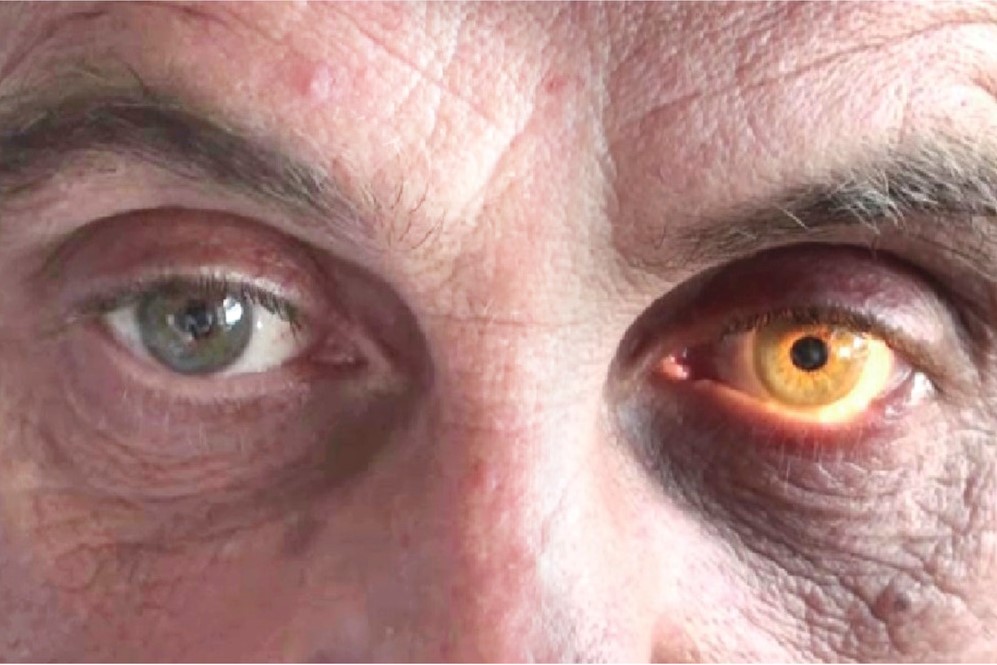
Positive or negative Argyll Robertson sign: how it is performed and meaning
The “Argyll Robertson sign” (or “Argyll Robertson pupil”; in English “Argyll Robertson pupils” or “AR pupils”) in medicine and semeiotics refers to a clinical sign that consists of the abolition of miosis (pupil constriction) upon light stimulation, but with preservation of miosis in accommodation and convergence
How is Argyll Robertson’s sign caused?
Phase 1: a light source is approached to the patient’s eyes and the presence or absence of a physiological pupillary constriction (miosis, i.e. the pupil constricts as a reaction to light: “pupillary reflex to light”) is verified.
Phase 2: An object is brought closer to the patient’s eyes and the presence of pupillary constriction is verified (‘accommodation/convergence reflex’).
Argyll Robertson’s sign: when is it positive and when is it negative?
If miosis occurs as a reaction to light and in accommodation/convergence, then Argyll Roberson’s sign is NEGATIVE and the lesion is NOT present.
If miosis occurs in accommodation/convergence but NOT as a reaction to light, then Argyll Roberson’s sign is POSITIVE and the lesion IS present.
In which diseases does it occur?
The positive Argyll Robertson’s sign is typical of certain diseases of the central nervous system, such as neurosyphilis (dorsal tabe), the most important manifestation of tertiary syphilis.
Where is the lesion?
The pathophysiological mechanism that produces an Argyll Robertson’s pupil is unclear, but it is believed to be the result of bilateral damage to the pretectal nuclei in the midbrain caused primarily by neurosyphilis (Treponema pallidum infection).
The rostral midbrain near the cerebral aqueduct of the third ventricle is the most likely region of damage.
The connections between the bilateral pupillary pathways and the Edinger-Westphal nuclei are thus blocked.
This interrupts the afferent pathways of the photomotor reflex, but leaves the pupillary contraction (miosis) pathways of accommodation/crestriction intact.
Another possible cause is Parinaud’s syndrome, also called dorsal midbrain syndrome.
This syndrome involves vertical gaze paralysis associated with pupils that ‘accommodate but do not react’.
Causes of Parinaud’s syndrome include brain tumours (pinealomas), multiple sclerosis and brainstem infarction.
It is currently unknown whether syphilis can cause Parinaud’s syndrome.
There is no definite treatment of Argyll Robertson’s sign
However, as syphilis may be an underlying cause – it can be prevented by treating neurosyphilis with penicillin 24 mU intravenously daily for 10-14 days.
Name and history
Argyll Robertson’s sign owes its name to its discoverer, the Scottish ophthalmologist and surgeon Douglas Argyll Robertson (1837-1909), who described the condition in the mid-1860s.
In the early 20th century, William John Adie described a second type of patient who could ‘accommodate but not react’, describing ‘Adie’s tonic pupil’ which is usually associated with a benign peripheral neuropathy (Adie’s syndrome), and not with syphilis as with Argyll Robertson’s sign.
When penicillin became widely available in the 1940s, the prevalence of AR pupils (which only develop after decades of untreated infection) decreased dramatically.
Patients with this sign are quite rare today.
A patient whose pupil ‘settles but does not react’ almost always has a tonic pupil, not an AR pupil.
In the 1950s, Loewenfeld distinguished between the two types of pupils by carefully observing the exact way the pupils constrict with near vision.
The close response in patients with AR pupils is rapid and immediate.
The close response in tonic pupils is slow and prolonged.
Read Also:
Emergency Live Even More…Live: Download The New Free App Of Your Newspaper For IOS And Android
Colour Changes In The Urine: When To Consult A Doctor
The Colour Of Pee: What Does Urine Tell Us About Our Health?
Summer And High Temperatures: Dehydration In Paramedics And First Responders
First Aid For Dehydration: Knowing How To Respond To A Situation Not Necessarily Related To The Heat
Hydration: Also Essential For The Eyes
What Is Aberrometry? Discovering The Aberrations Of The Eye
Red Eyes: What Can Be The Causes Of Conjunctival Hyperemia?
Ectopia Lentis: When The Lens Of The Eye Shifts


